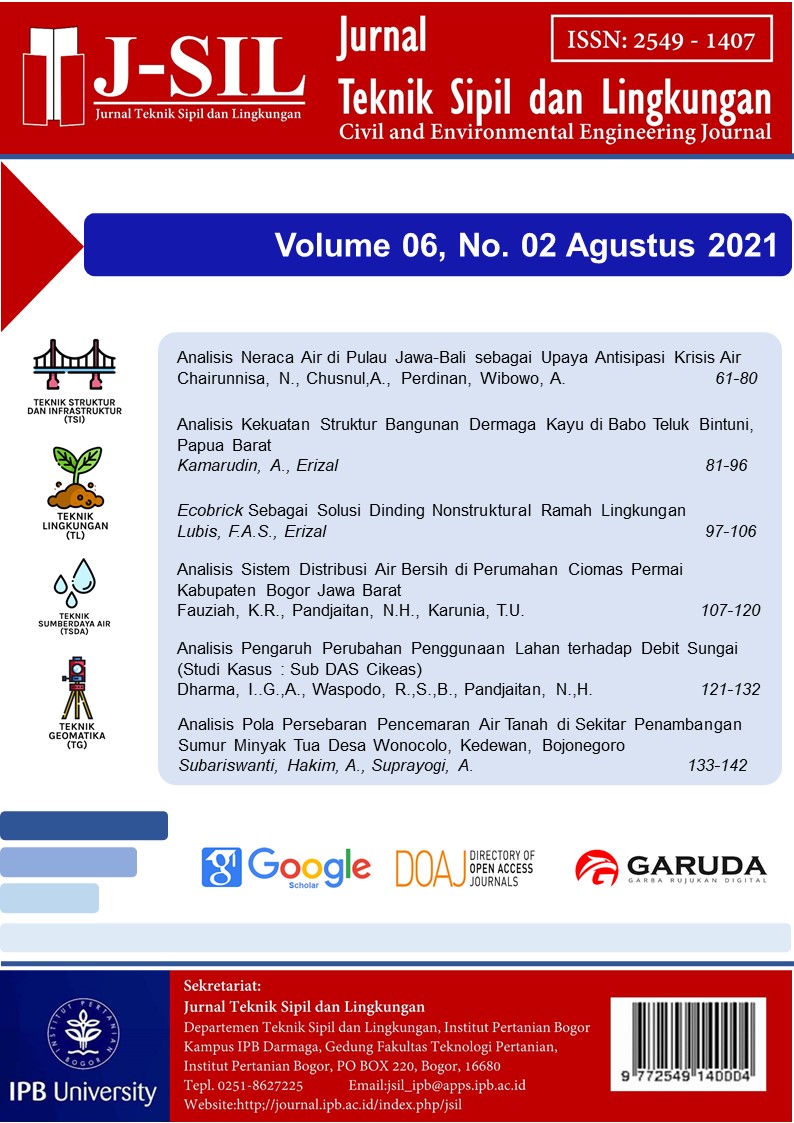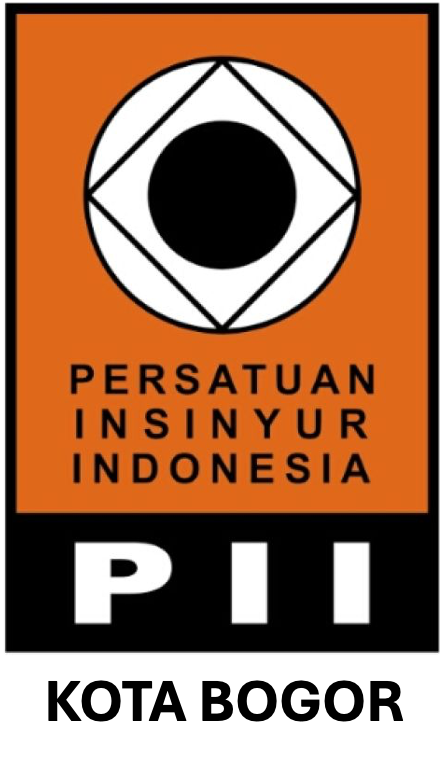Analisis Kekuatan Struktur Bangunan Dermaga Kayu di Babo Teluk Bintuni, Papua Barat
Analysis of the Structural Strength of a Wooden Pier in Babo Teluk Bintuni, West Papua
Abstract
Analysis of structural strength to the conditions of the jetty Port Babo of Teluk Bintuni, West Papua is important to ensure the stability of the against external loads and forces. The purpose of this research is to analyse and evaluate the strength of structures, as well as assess the durability of jetty structures. Modeling using the SAP2000 program corresponds to as built drawing. The results of the calculation of the working load include dead loads, live loads, ship berth, ship mooring force, current force, wave force, and earthquake force. Energy due to ship collision loads and vessel berthing force can be reduced using a fender designed using rubber fenders seibu V300H. The results of the structural analysis show that the number of combined variants is sufficient up to the shape mode 12. The dynamic earthquake shear forces in the x and y directions are still smaller than the static shear forces, so it needs to be multiplied by a scale factor of 2,9. The deviation that occurs in the structure is still smaller than the allowable deviation of 350 mm. Beams are designed using reinforcement with diameter 22 mm and 25 mm. The stress ratio value at the pile meets the pile capacity. It can be said that overall the Babo Teluk Bintuni wharf is safe from the working load.
Downloads
References
[BSN] Badan Standardisasi Nasional. 2012. Tata Cara Perencanaan Ketahanan Gempa untuk Struktur Bangunan Gedung dan Non Gedung, SNI 1726-2012. Jakarta (ID): Badan Standardisasi Nasional.
[BSN] Badan Standardisasi Nasional. 2013. Persyaratan Beton Struktural untuk Bangunan Gedung, SNI 2847-2013. Jakarta (ID): Badan Standardisasi Nasional.
Budiono B, Supriatna L. 2011. Studi Komparasi Desain Bangunan Tahan Gempa dengan Menggunakan SNI 03-1726-2002 dan RSNI 03-1726-201X. Bandung (ID): ITB Press
[DepKP] Departemen Kelautan dan Perikanan. 2004. Undang-undang RI No. 31 tahun 2004 Tentang Perikanan. Jakarta (ID): Departemen Kelautan dan Perikanan.
Nopandri R, Fauziyah, Rozirwan. 2011. Stabilitas statis kapal bottom gillnet di Pelabuhan Perikanan Nusantara Sungailiat Bangka Belitung. Maspari Journal. 2(1): 63-69.
Nusantara MA. 2014. Analisa daya dukung pondasi dangkal pada tanah lempung menggunakan perkuatan anyaman bambu dan grid bambu dengan bantuan program plaxis. Jurnal Teknik Sipil dan Lingkungan. 2(3): 364-372
[OCDI] The Overseas Coastal Area Development Institute of Japan. 2002. Technical Standards and Commentaries for Port and Harbour Facilities in Japan. Tokyo (JP): Japan Ports and Harbours Association.
[POLB] Port Of Long Beach. 2012. Port of Long Beach Wharf Design Criteria. California (US): Port of Long Beach.
[PUSKIM] Pusat Penelitian dan Pengembangan Perumahan dan Pemukiman. 2020. Desain Spektra Indonesia. http://rsapuskim2019.litbang.pu.go.id. (26 Juli 2020).
Quinn AD. 1972. Design and Constraction of Port and Marine Structure. New York (US): Mc Graw-Hill Book Company.
Triatmodjo B. 2009. Perencanaan Pelabuhan. Yogyakarta (ID): Beta Offset.
Copyright (c) 2021 Jurnal Teknik Sipil dan Lingkungan

This work is licensed under a Creative Commons Attribution-NonCommercial-NoDerivatives 4.0 International License.
Authors who publish with Jurnal Teknik Sipil dan Lingkungan, JSIL agree to the following terms:
a. Authors retain copyright and grant the journal right of first publication with the work simultaneously licensed under a Creative Commons Attribution License that allows others to share the work with an acknowledgment of the work's authorship and initial publication in this journal.
b. Authors are able to enter into separate, additional contractual arrangements for the non-exclusive distribution of the journal's published version of the work (e.g., post it to an institutional repository or publish it in a book), with an acknowledgment of its initial publication in this journal.
c. Authors are permitted and encouraged to post their work online (e.g., in institutional repositories or on their website) prior to and during the submission process, as it can lead to productive exchanges, as well as earlier and greater citation of published work (See The Effect of Open Access).











